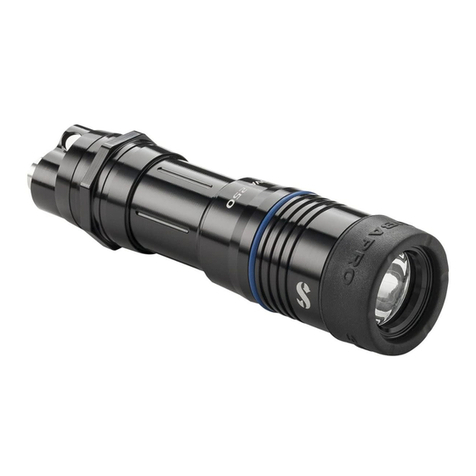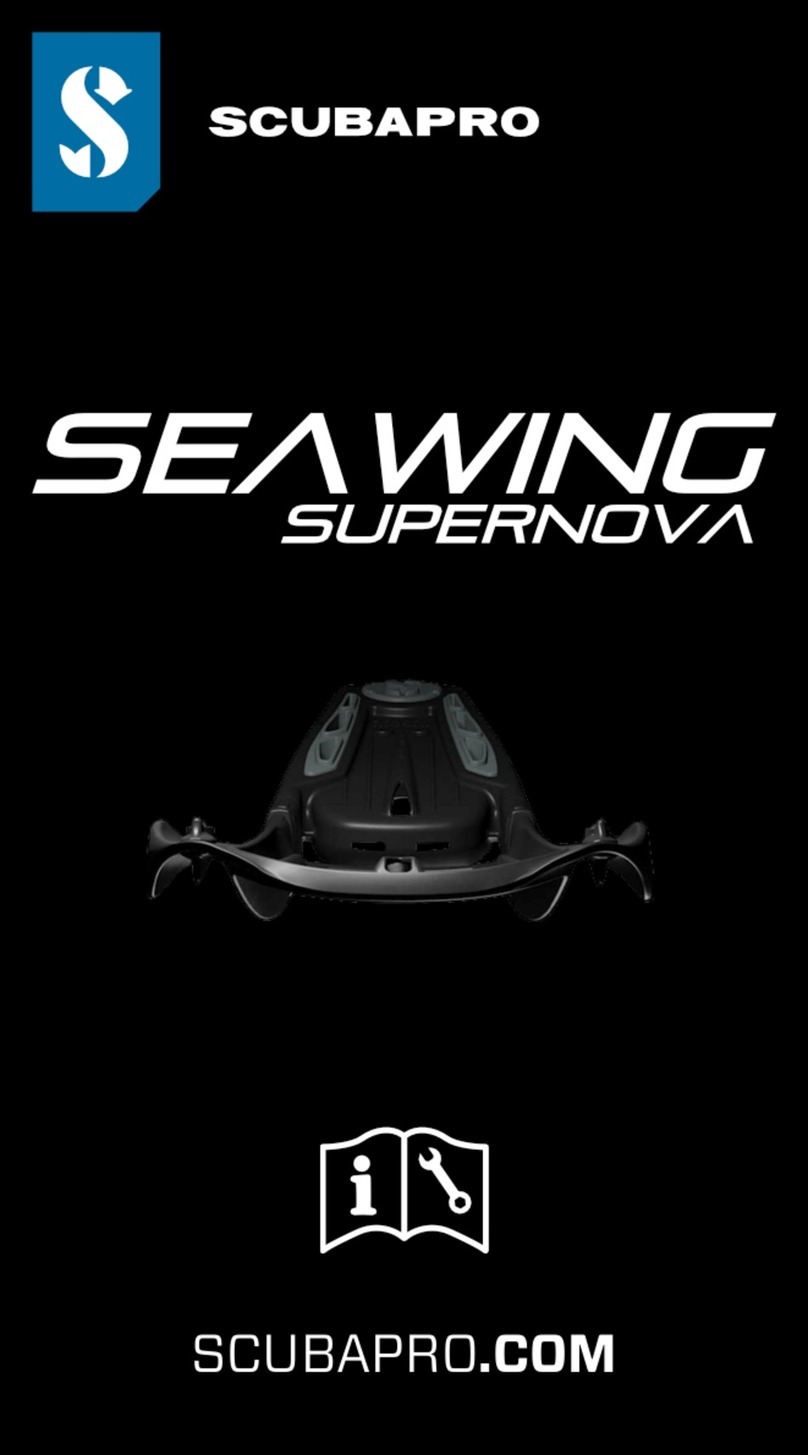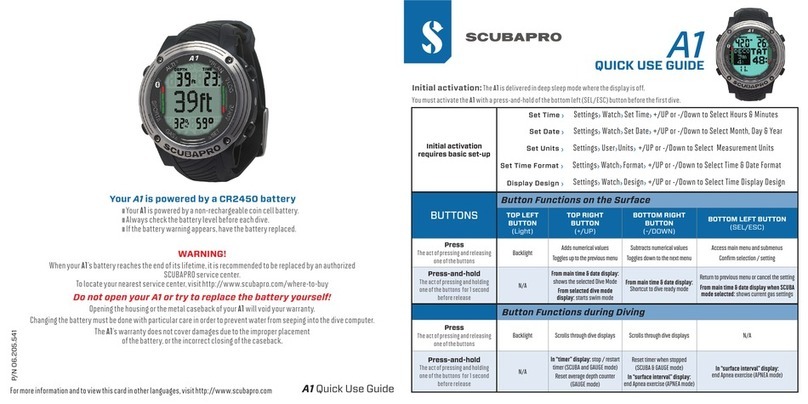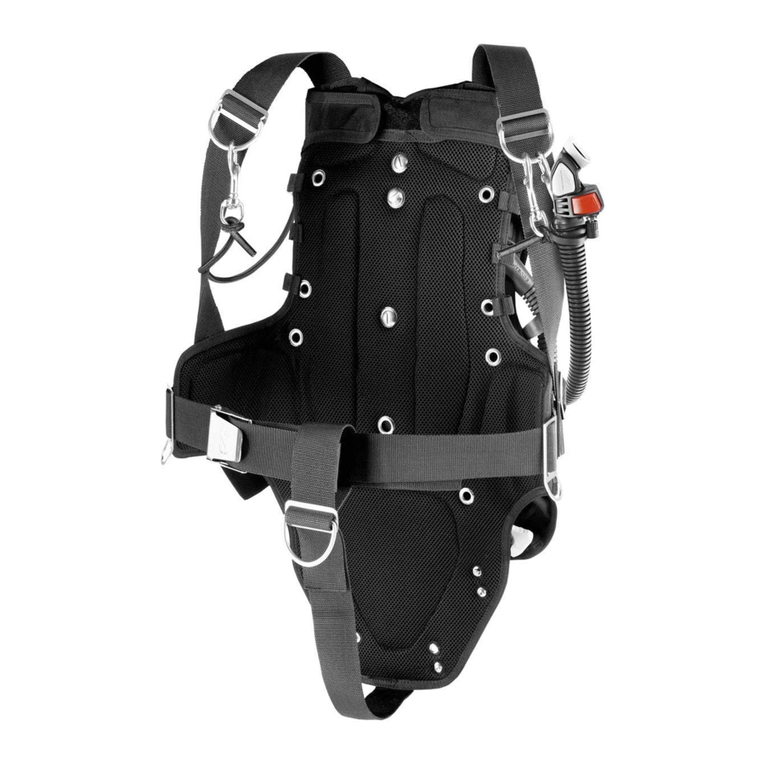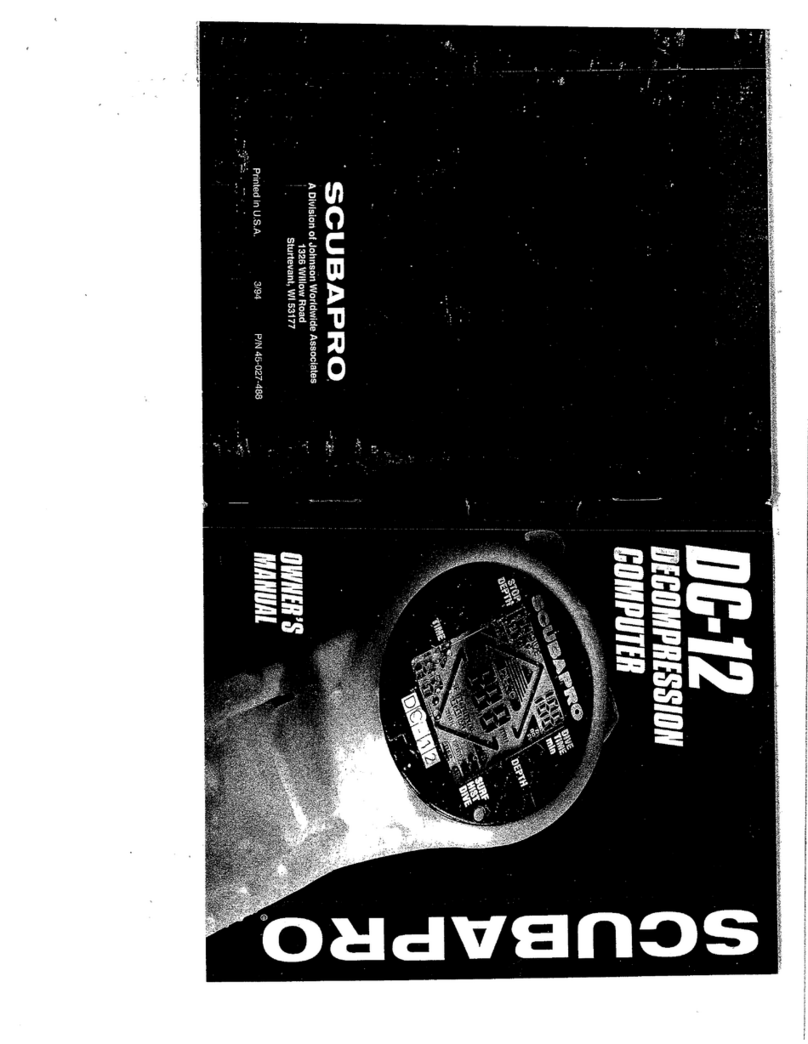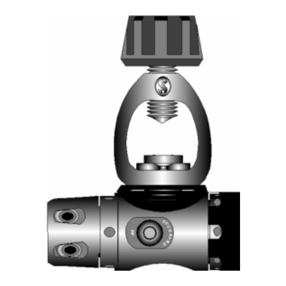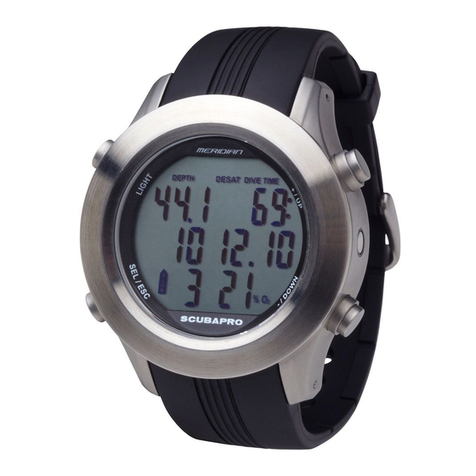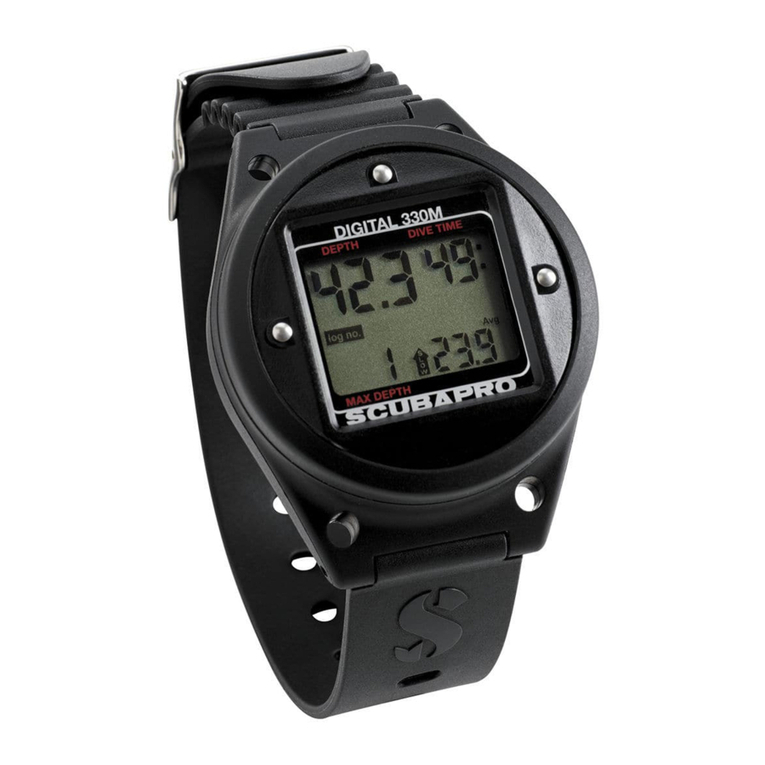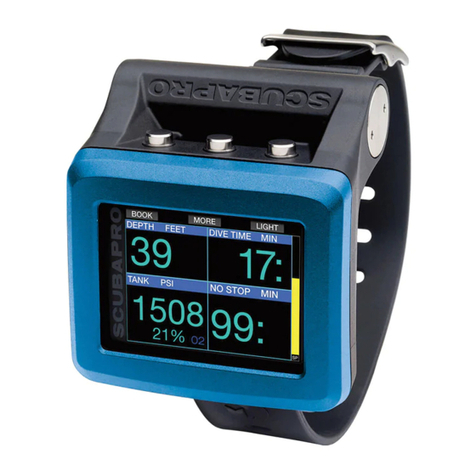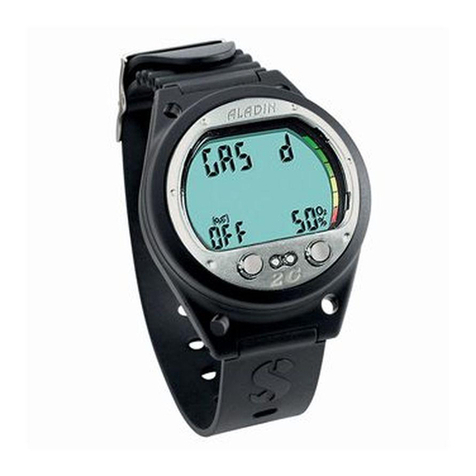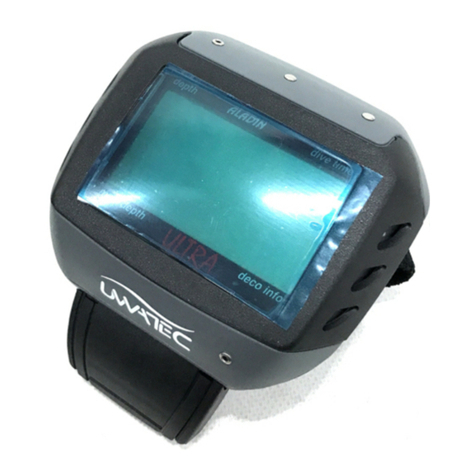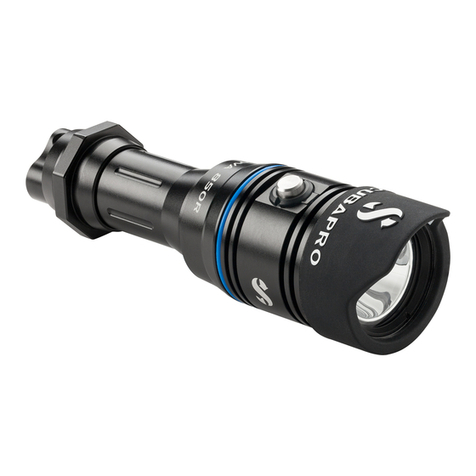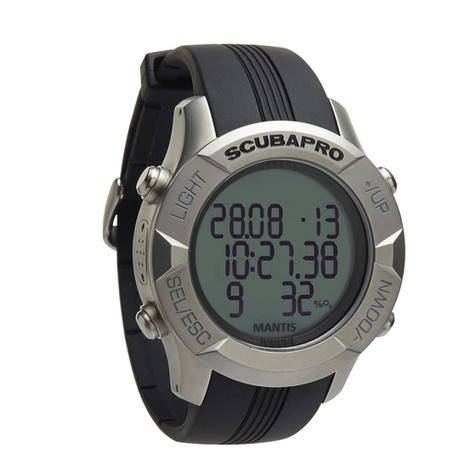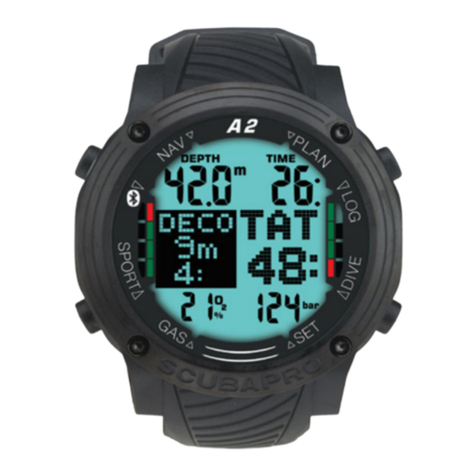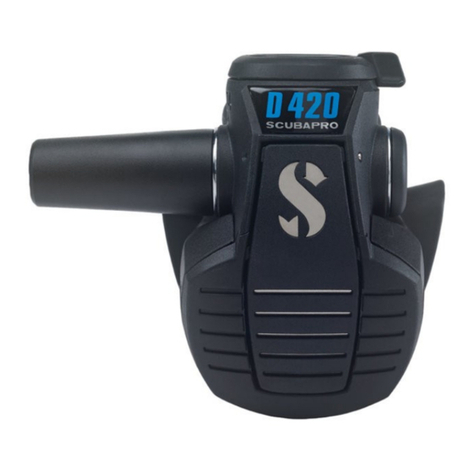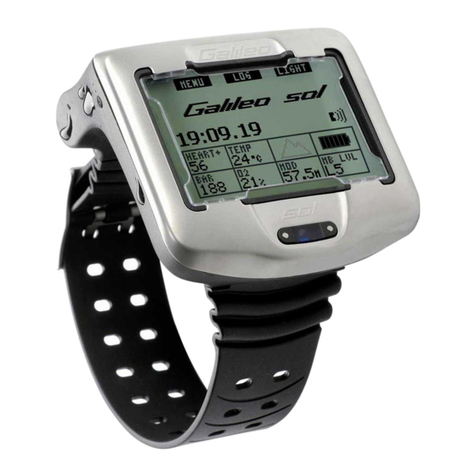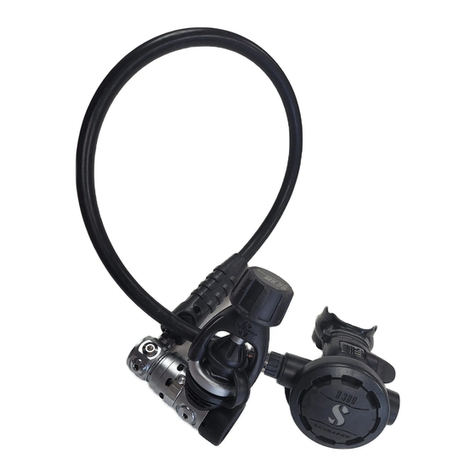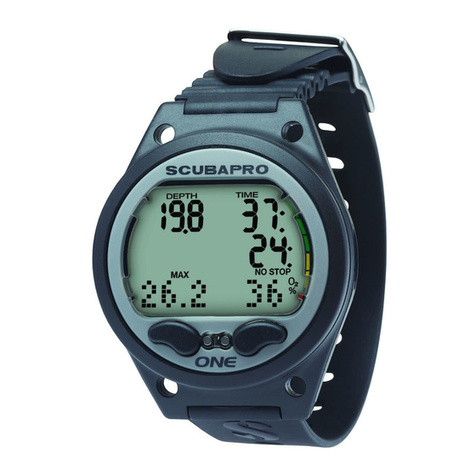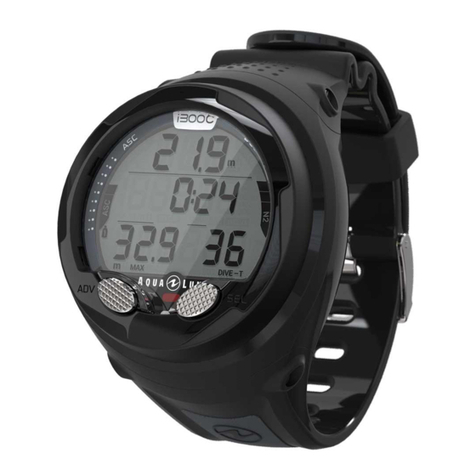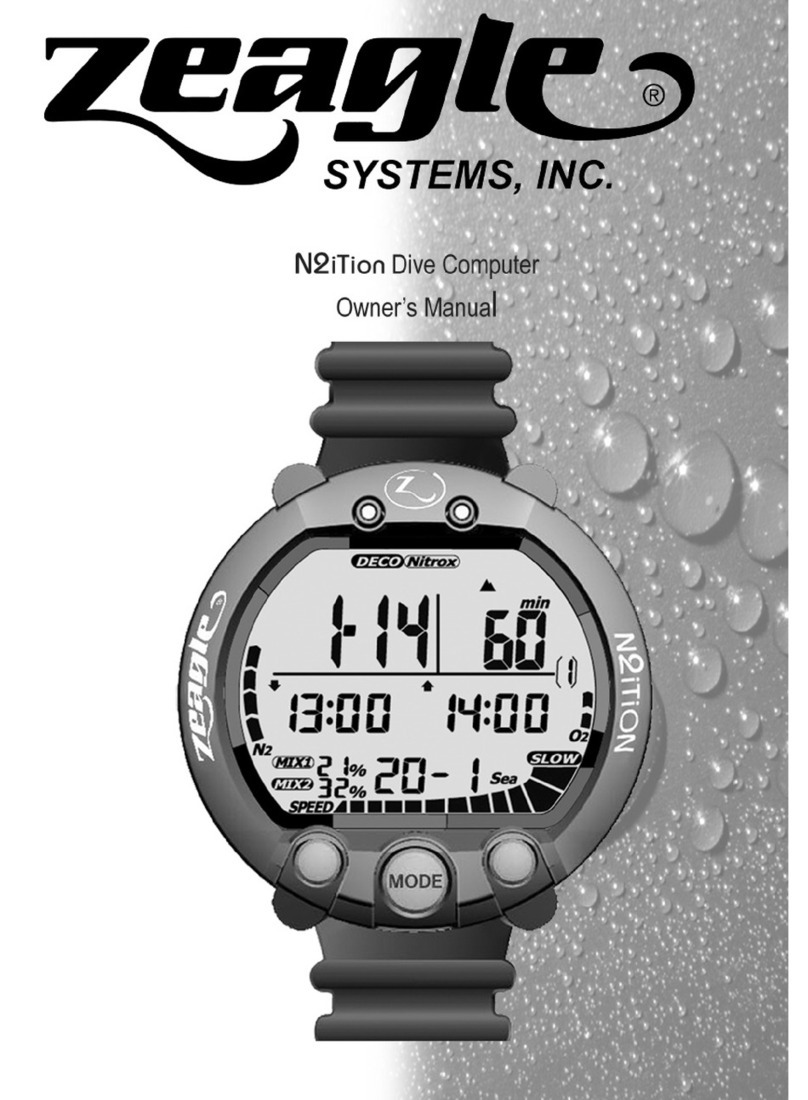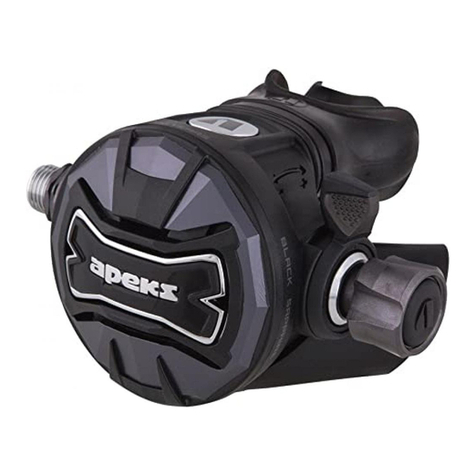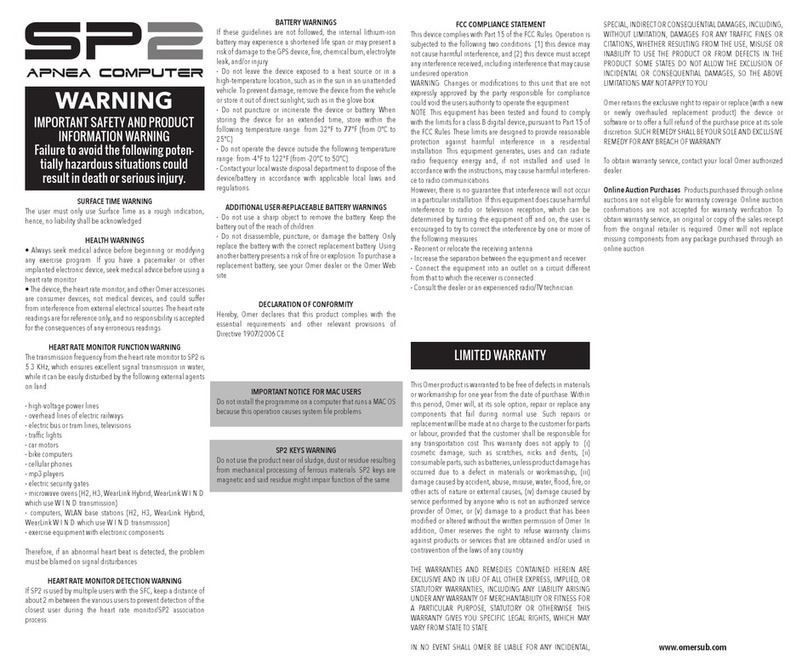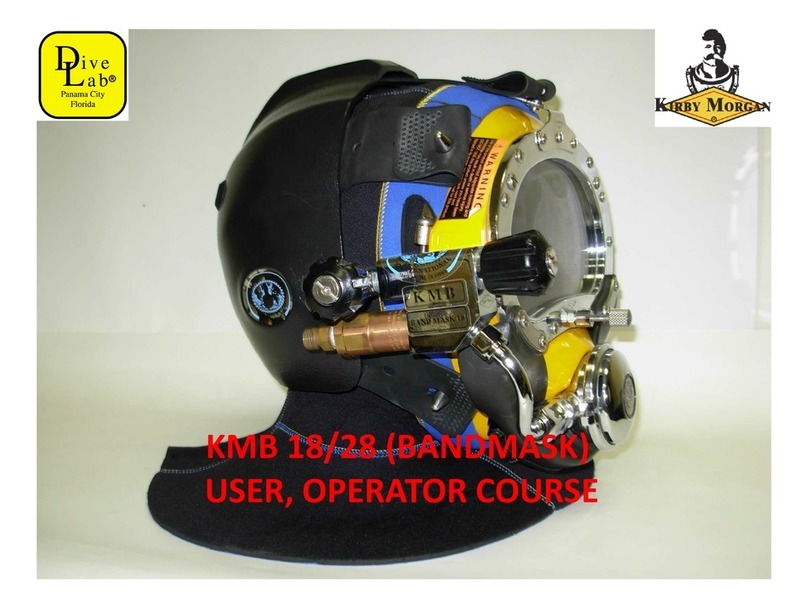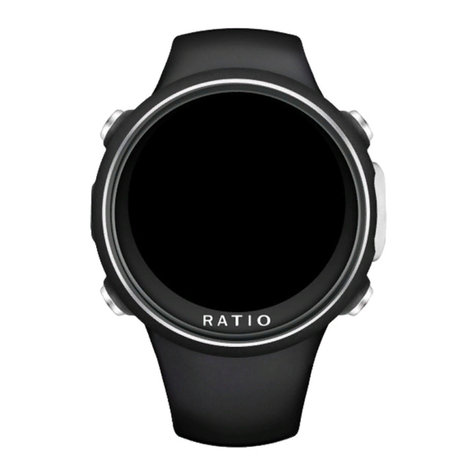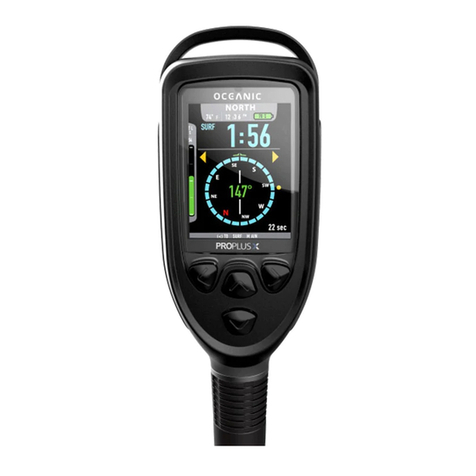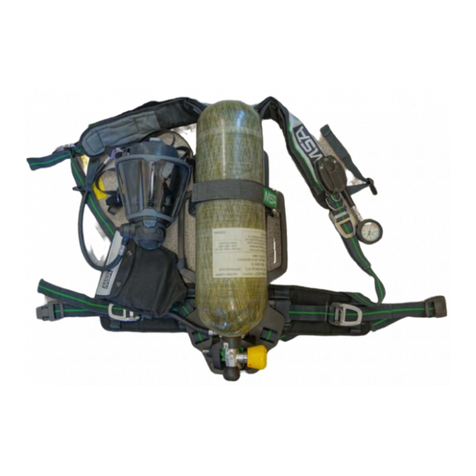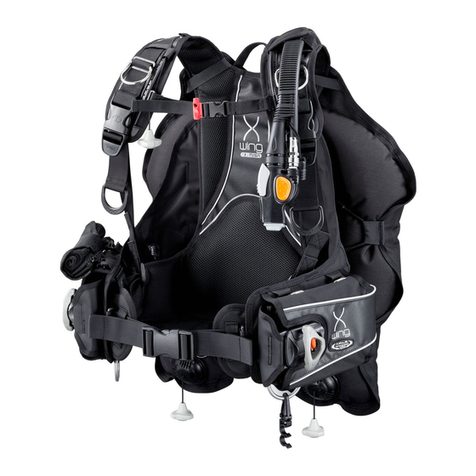
111. WARNINGS
TO ENSURE SAFE DIVING AND PROPER USE OF THE DC-12
DECOMPRESSION COMPUTER, THERE ARE VERY IMPORTANT
SAFETY WARNINGS WHlc'i-1MUST BE COMPLETELY UNDER-
STOOD AND FOLLOWED:
1. YOU MUST READ.THIS ENTIRE MANUAL CAREFULLY. Before
you use the DC-12 Decompression Computer, you must be thoroughly
familiar with the functions and operation of the Decompression Com-
puter, and the risks associated with the use of the Decompress!on
Computer. Therefore, before you dive with the DC-12 Decompression
Computer, you must carefully read this entire manuaL Pay close
attention to all instructions -which include all warnings - contained in
this manuaL Make sure you closely follow all of the instructions when
using the DC-12 Decompression Computer. Make sure you under-
stand all of the instructions when using the DC-12 Decompression
Computer. IMPROPER USEOFTHE DC-12 DECOMPRESSION COM-
PUTER CAN RESULT IN SERIOUS INJURY OR DEATH.
2. THE DC-12 DECOMPRESSION COMPUTER DOES NOT AND
CANNOT ELIMINATE THE RISK OF DECOMPRESSION SICKNESS.
No matter how careful you are or what equipment you use, there is a risk
of decompression sickness (also known as "the bends") any time you
dive. The DC-12 Decompression Computer cannot eliminate the risk of
decompression sickness, even when you use the DC-12 Decompres-
sion Computer properly and follow all instructions precisely. The risk of
decompression sickness is part of diving. Before you dive, you must be
prepared to recognize the signs and symptoms of decompression
sickness and know what to do in case of decompression sickness.
DECOMPRESSION SICKNESS CAN RESULT IN SERIOUS INJURY
OR DEATH. DO NOT DIVE UNLESS YOU KNOW AND UNDER-
STAND THE RISKS OF DIVING AND ACCEPT THE RESPONSIBIL-
ITY ASSOCIATED WITH THOSE RISKS.
4
3. THE DC-12 DECOMPRESSION COMPUTER IS TO BE USED
ONLy BY CERTIFIED DIVERS. Safe diving requires training. DO NOT
dive unless you havetaken and passed acertified diver training course.
Such courses are offered by NASDS, NAUI, PADI, 881,YMCA, and
other recognized diver training groups. There are also special courses
available in the use of dive computers. We highly recommend the
completion of such a course prior to using the DC-12 Decompression
Computer.
4. REDUCE RISK BY BEING CONSERVATIVE INYOUR DIVING. No
dive computer or dive table can guarantee against decompression
sickness. TO REDUCE THE RISK OF DECOMPRESSION SICK-
NESS, DIVEWELL WITHIN THE LIMITSESTABLISHED BYTHE DC-
12 DECOMPRESSION COMPUTER. BE CONSERVATIVE WHEN
DIVING.
5. STAY WELL WITHIN SAFETY MARGINS. The DC-12 Decompres-
sion Computer provides the diver with information regarding no-stop
time, ascent rate and wait-to-fly times. These are model limits designed
to protect the majority of divers from experiencing decompression
problems during mostdives. However, notwo peopleareexactly alike,
and studies have shown that certain individuals are moresusceptible to
decompression problems. TO REDUCE THE RISK OF DECOMPRES-
SION SICKNESS, DIVE CONSERVATIVELY. STAY WELL WITHIN
ALL SAFETY MARGINS.
6. DO NOT DESCEND BELOW 100 FEET (30 METERS) ON ANY
DIVE. Even though the DC-12 has the capability of operating to
greater depths, most recognized diving authorities and di~er
certifying agencies recommend that sport divers, even those with
advanced diver training restrict their diving to less than 100 feet.
Sportdivers with limited experience should follow the moreconservative
guideline of 60 feet (18 meters) maximum.
5
